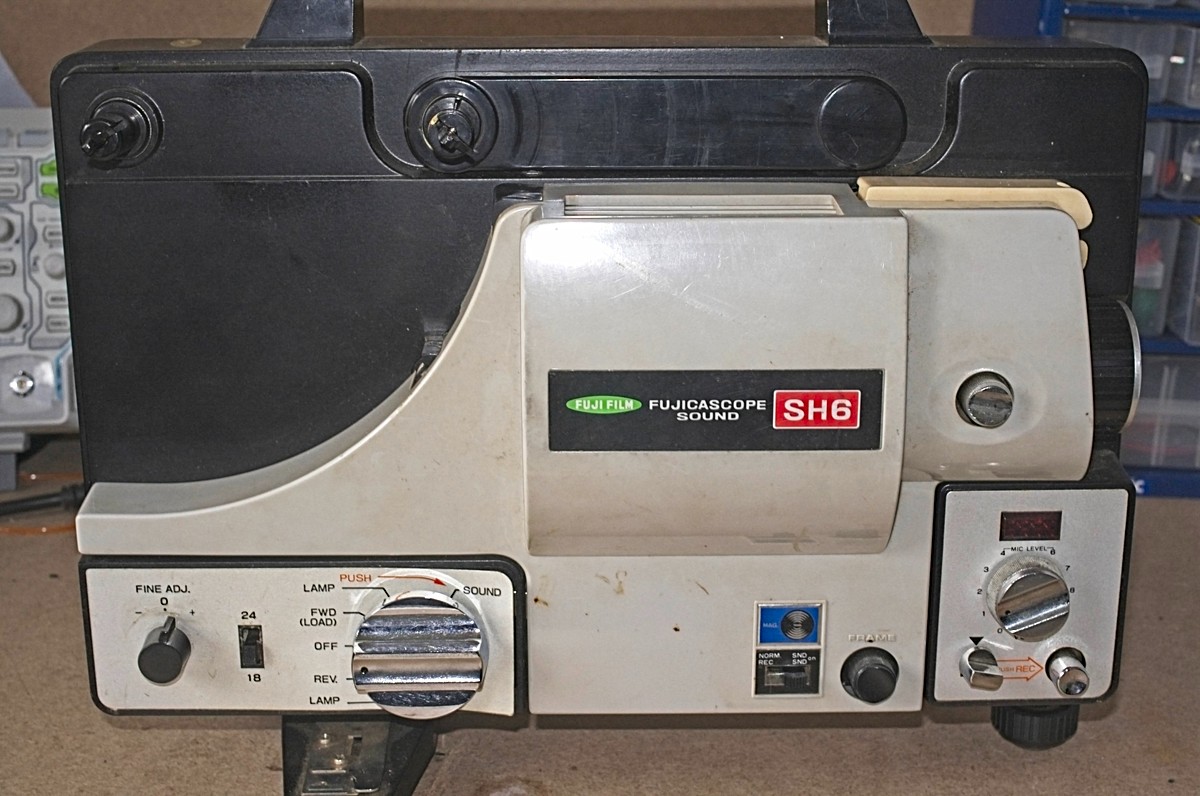The Fujicascope SH6 Super 8 sound projector
The Fujicascope SH6 is a super 8 cine projector made by Fuji in the mid 1970s, that features the ability to play a magnetic soundtrack during playback, if the film was recorded with sound.
Initial assessment and fixes of my Fujicascope SH6 Super 8 sound projector
I bought my copy of the Fujicascope SH6 projector from eBay UK as a non-working unit for £30 including postage. I got it because I have a number of Super 8 sound films, but no way of playing the soundtrack, so I thought £30 was probably worth risking on the basis that the projector almost certainly works, and if not it may not be too difficult to fix.
It also adds to my growing collection of vintage projectors!
It arrived packaged in a sturdy cardboard box, which contained the SH6 inside its original packaging but unfortunately without the instruction manual. I didn’t think I’d need the instruction manual in order to work out how to use the projector, but it’s always nice to have it.
The first thing I checked when I removed the projector from the packaging was the state of the lamp, because that is the component of any vintage projector that has the shortest life span. Sure enough, the filament of the lamp was blown, so I knew I’d need to get a new lamp. As it turns out however, I had a spare Halogen lamp that fitted the SH6, so that was relatively easy to solve.
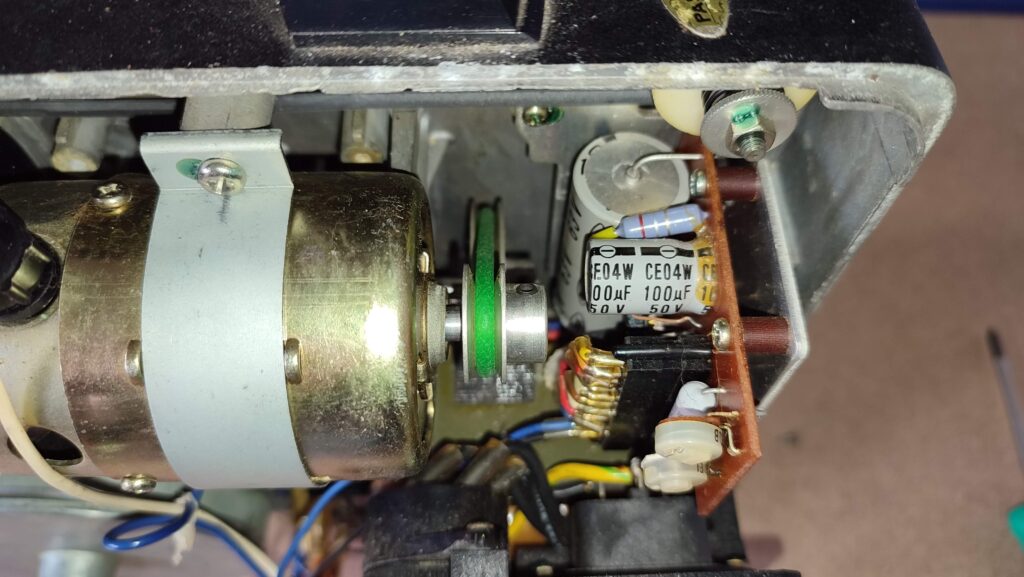
The next most likely component to fail in super 8 vintage projectors, is the belt that transmits the motor motion to the film transport and shutter mechanism. Again, this had rotted away, so I needed to fit a new belt.
As it happened, again I didn’t need to spend any money because I could make one by using some Urethane Belting which I’d bought for just this sort of job. This belting can be cut to length and the ends welded together using a heat source((In my case I used a soldering iron)) to make a loop, which seems to work as well as the original projector belt.
Unfortunately, because the original belt had gone, I had to guess the length of belt needed, and it took several attempts to get it right. I had to weld a length of belting, try it and then cut it and re-weld it until the projector ran correctly. Although that isn’t a difficult job, I had to remove the motor each time so that I could squeeze the belt past the mains input block, so it was frustrating.
The other issues I found during my initial assessment of the projector, were that the speaker connections had been disconnected and left unattached, and the lamp wouldn’t initially run because of bad contacts, so I had to clean them up a bit. Also, the unit is a bit grubby and some of the labels are starting to peel a bit and need some re-gluing.
Photos of the Fujicascope SH6 sound projector.
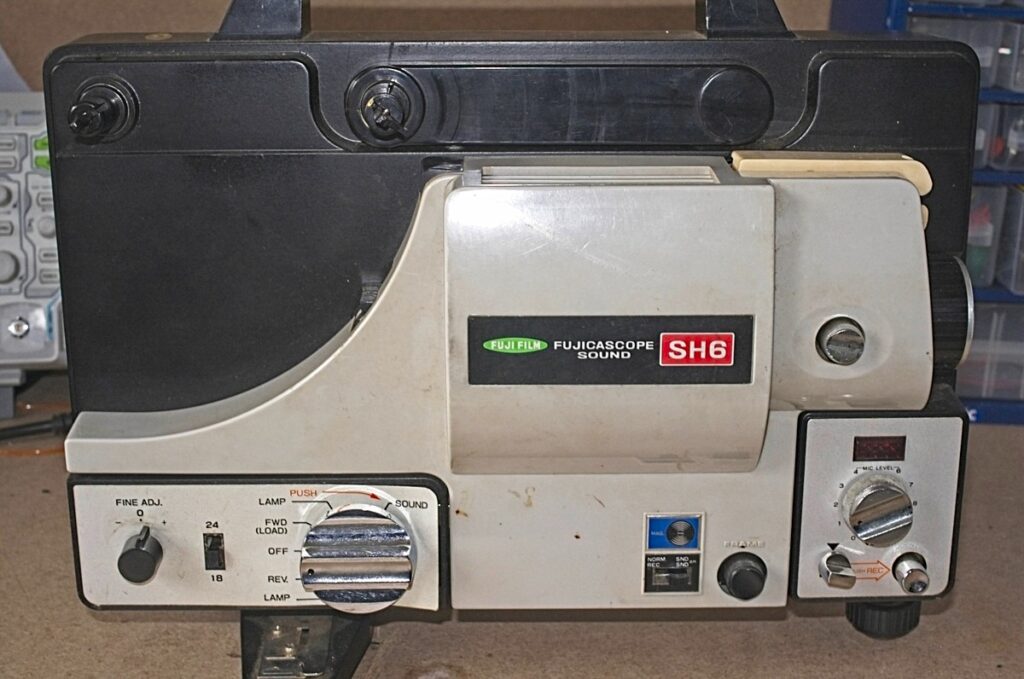

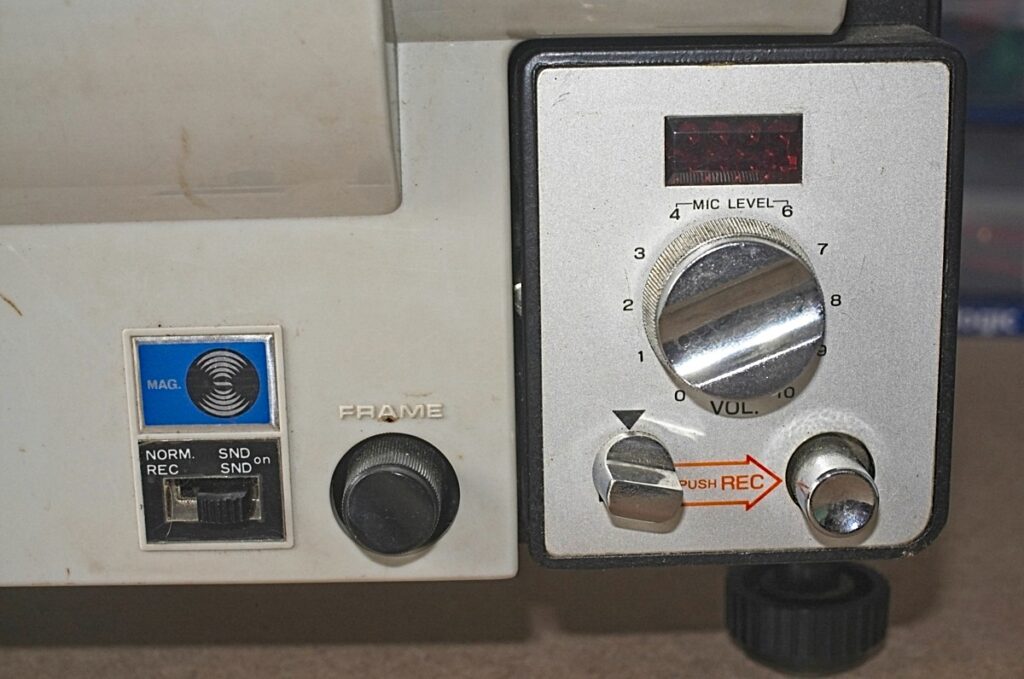
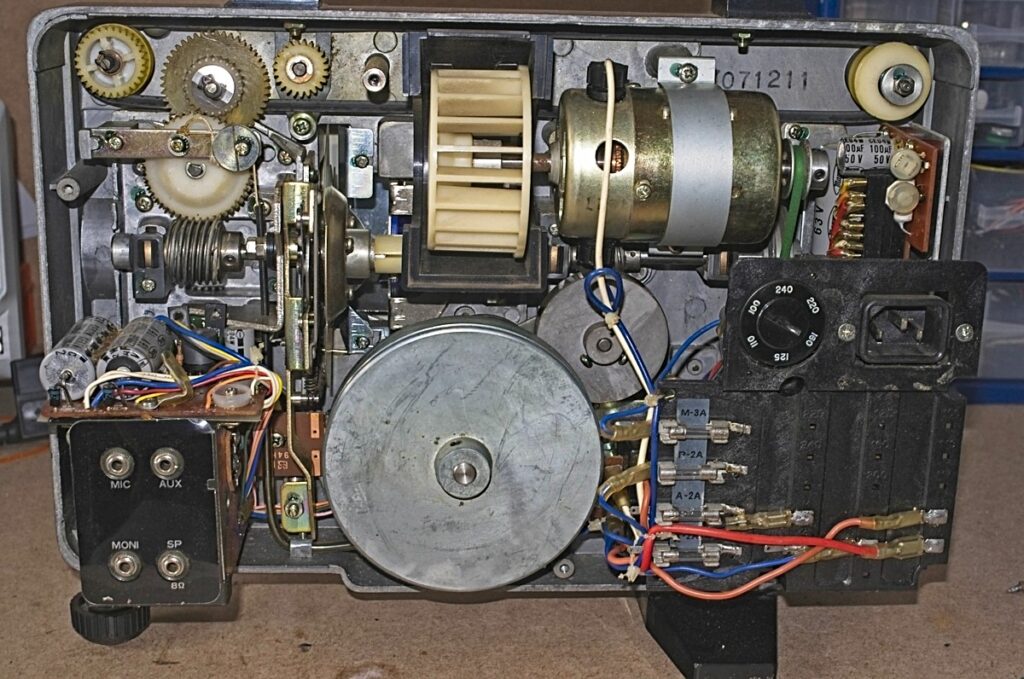
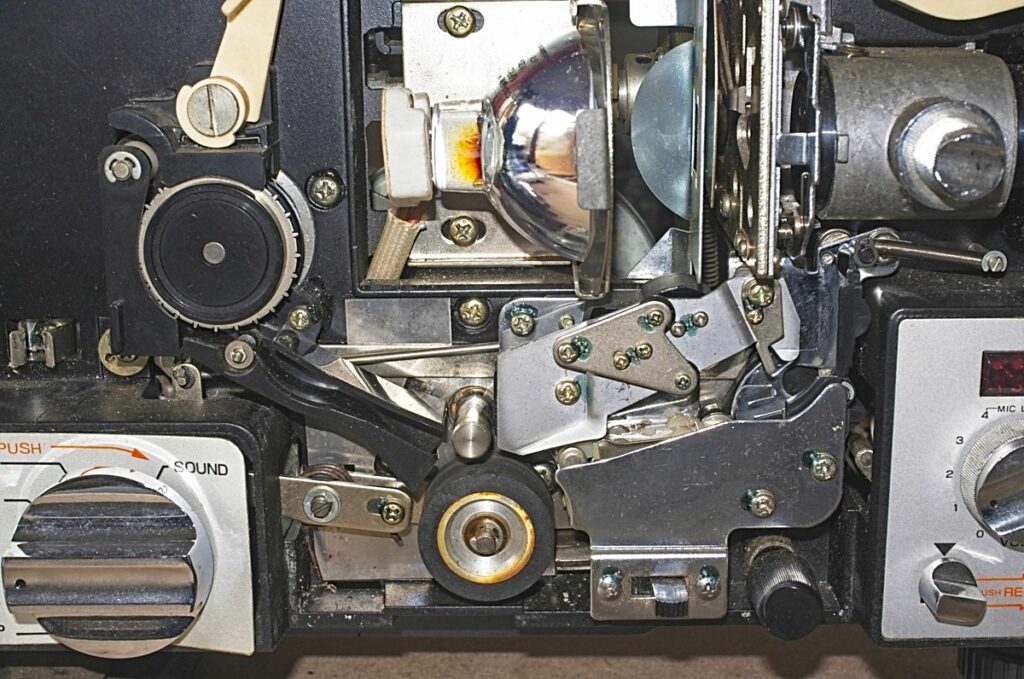
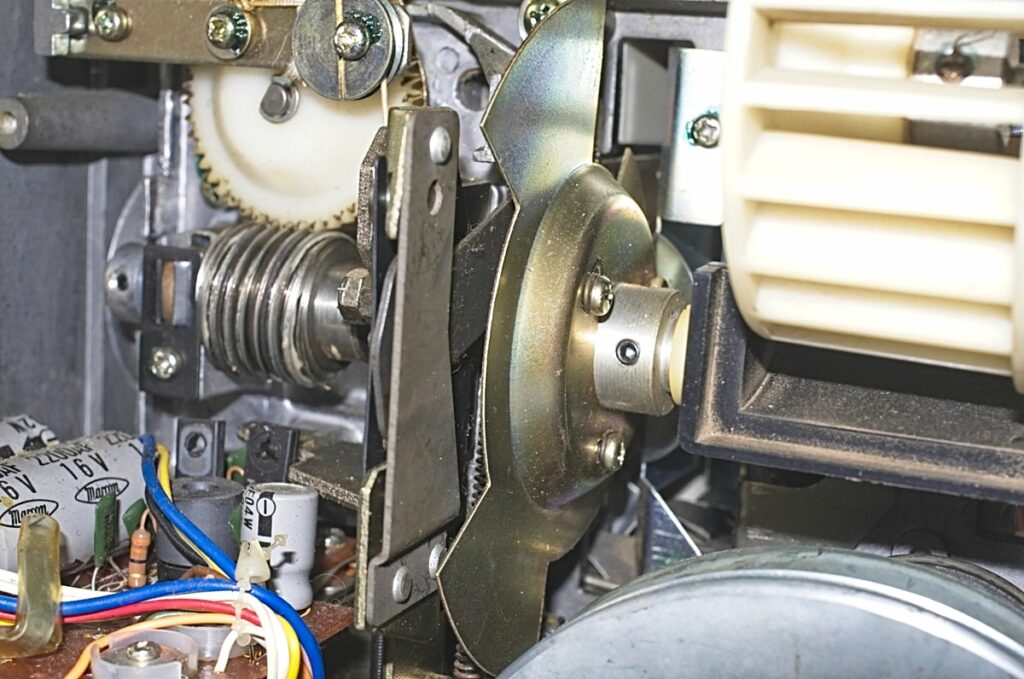
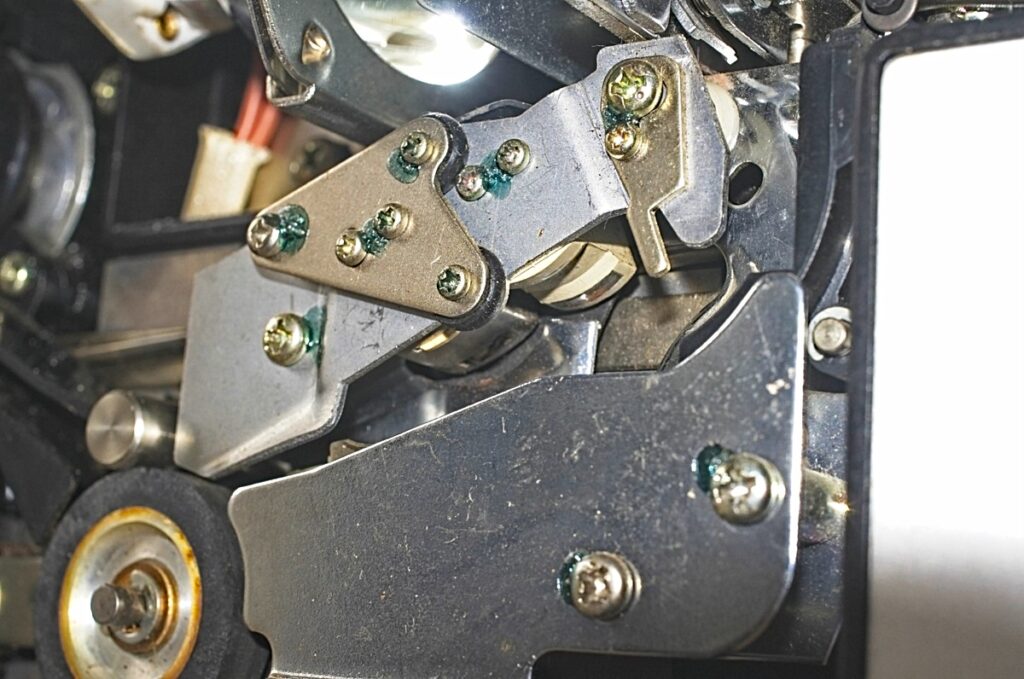
Description of the Fujicascope SH6 vintage projector.
The SH6 is a projector which will play Super 8 film and features autoload, a dual frame rate of 18 fps and 24 fps, a zoom lens and the headline feature of being able to play and record a soundtrack on to suitably equipped films.
The Autoload function was a standard feature on many film projectors by the time this unit was made in the mid 1970s and when it works it’s a very useful thing to have. Instead of having to feed the film through the different sprocket arrangements and getting the right amount of film looped before the gate etc., the projector took care of everything; You just feed the end of the film into the autoloader and wait until the same end emerges near the take-up spool.
On many projectors, including this one, most times the film will actually catch on the take-up reel and the projector is ready to go.
On the main projector controls, the film motion position, which initiates the autoload, is the first position, and it’s followed by the lamp position, so once the film is loaded you can turn on the lamp and start showing the film.
Next to the main projector motion control is a switch that selects the frame rate((or speed)) that the projector should run at, along with a rotary control to fine tune it.
The majority of Super 8 films were shot at 18 fps, but some were instead shot at the higher frame rate of 24 fps. With these controls the projector can be set to correctly show either frame rate, and the rotary control would allow the projectionist to get the frame rate precisely set. That probably wouldn’t matter too much for silent films, but if the sound was the wrong pitch I guess that would be very noticeable.
There is a further position on the main control dial which enables the sound circuits. To turn to this position the control has to be pushed and turned, and this moves some pads in place which push the film towards the play heads which can pick up any sound recorded on the magnetic strip on the side of the film. This action can be seen in the short video below.
With the film in contact with the sound heads, the projector can either play a soundtrack which was recorded on the film, or, using the record button on the front control panel, a soundtrack can be recorded on to the film.
As well as the record button, the front control panel also has a volume control and a recording level indicator.
There is an interesting switch in the sound controls which is marked, ‘Normal Rec’ & ‘Snd on Snd’. Although I don’t have the handbook, and don’t want to spoil one of my sound films by trying it out, I’m going to take a guess at what this switch does.
I would suspect that the ‘Normal Rec’ position allows the projector to erase the existing soundtrack on the film and replace it with whatever is fed into the input sockets on the back of the unit. There are inputs marked ‘Mic’ and ‘Aux’ which would allow a Microphone or tape recorder to feed input sounds in to the projector.
I think the ‘Snd on Snd'((I’m assuming Sound on Sound)) setting would allow the projectionist to augment any existing soundtrack with additional extra sounds. So, for example, it would be possible to add a commentary onto a holiday film to record where events took place etc.
Videos of the Fujicascope SH6
Here are a couple of videos of my copy of the Fujicascope SH6 playing a film with a soundtrack. They show the problems I still need to fix on the projector.
The first video shows a short clip where the projector played reasonably well
The second clip shows an issue with feedback in the sound circuits, there is a feedback issue and the projector makes a squeal as it tries to play.
Issues still to deal with on my Fujicascope SH6.
As the two clips demonstrate I still have some issues to deal with on my Fujicascope projector.
Firstly, although the clips above don’t show it, there is a definite issue with the autoload. Sometimes a film will just pull through the projector and all will be well. Other times the film sticks at some point – normally just under where the sound heads are located – and the film gets bunched up. If I don’t spot it, the film will be pushed into a small space until eventually it will stop in front of the lamp and a few frames will be burnt.
The other issue is demonstrated in the second clip. There is something that has gone ‘microphonic’ in the amplifier circuit which is located just behind the sound controls. The projector will suddenly emit loud squeals of feedback until I tap the front of the projector and stop it. This should actually be relatively easy to find if I can get the circuit board out and run the projector with the board on the bench.
One other issue is that the volume control is noisy and needs cleaning – that’s a common problem with any electronic device this old.
So that’s my assessment / review of the SH6. When I get the faults fixed I’ll post a follow-up article to show how that went.
Discover more from Everything Vintage
Subscribe to get the latest posts sent to your email.

